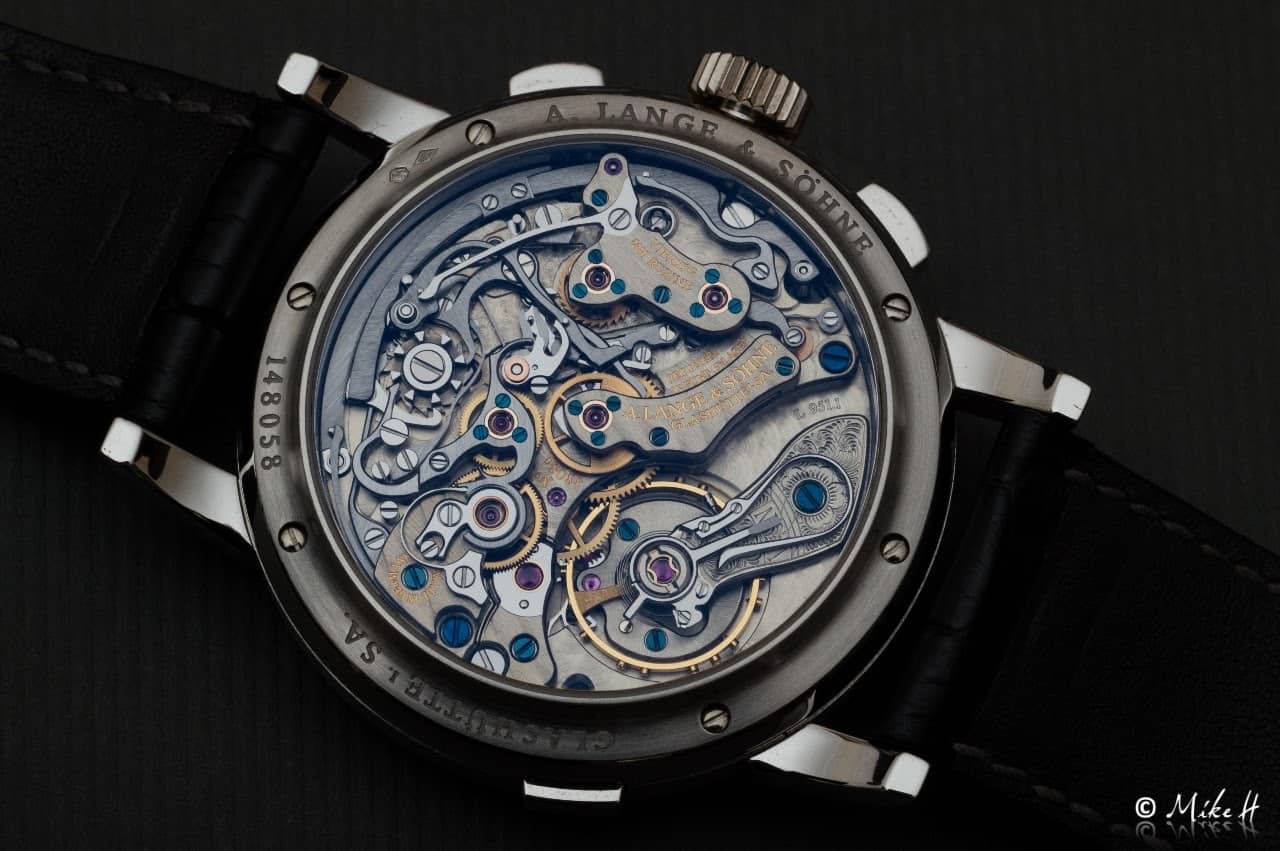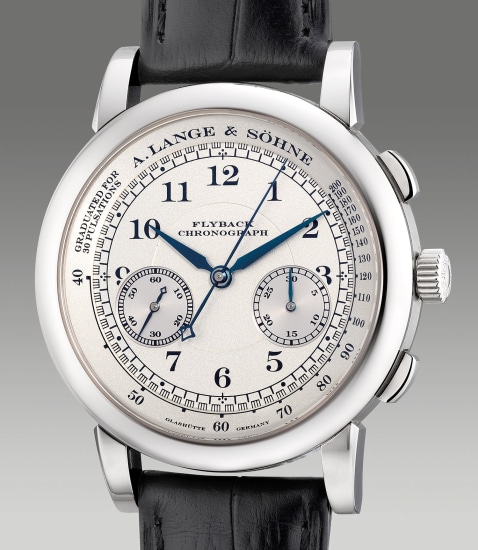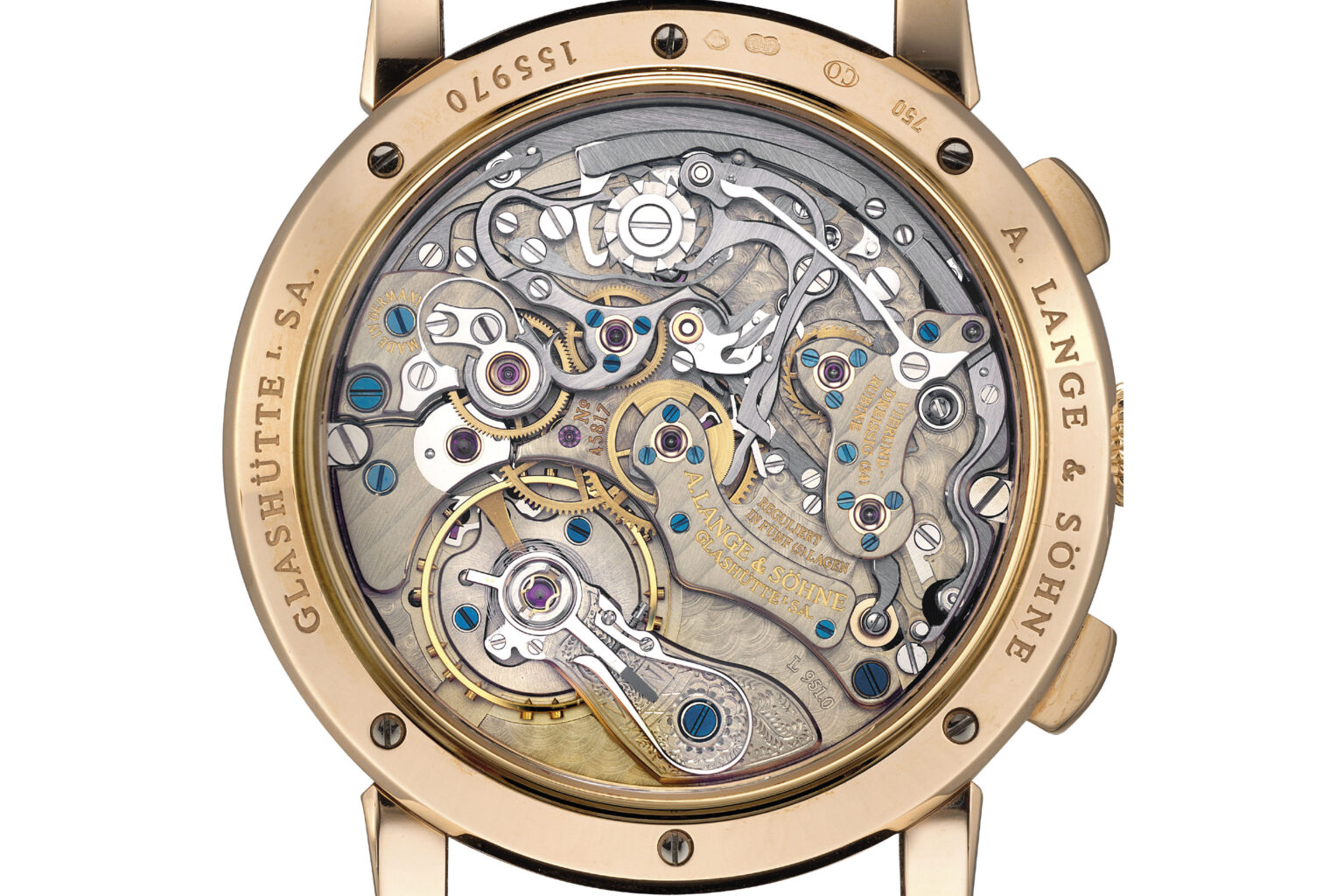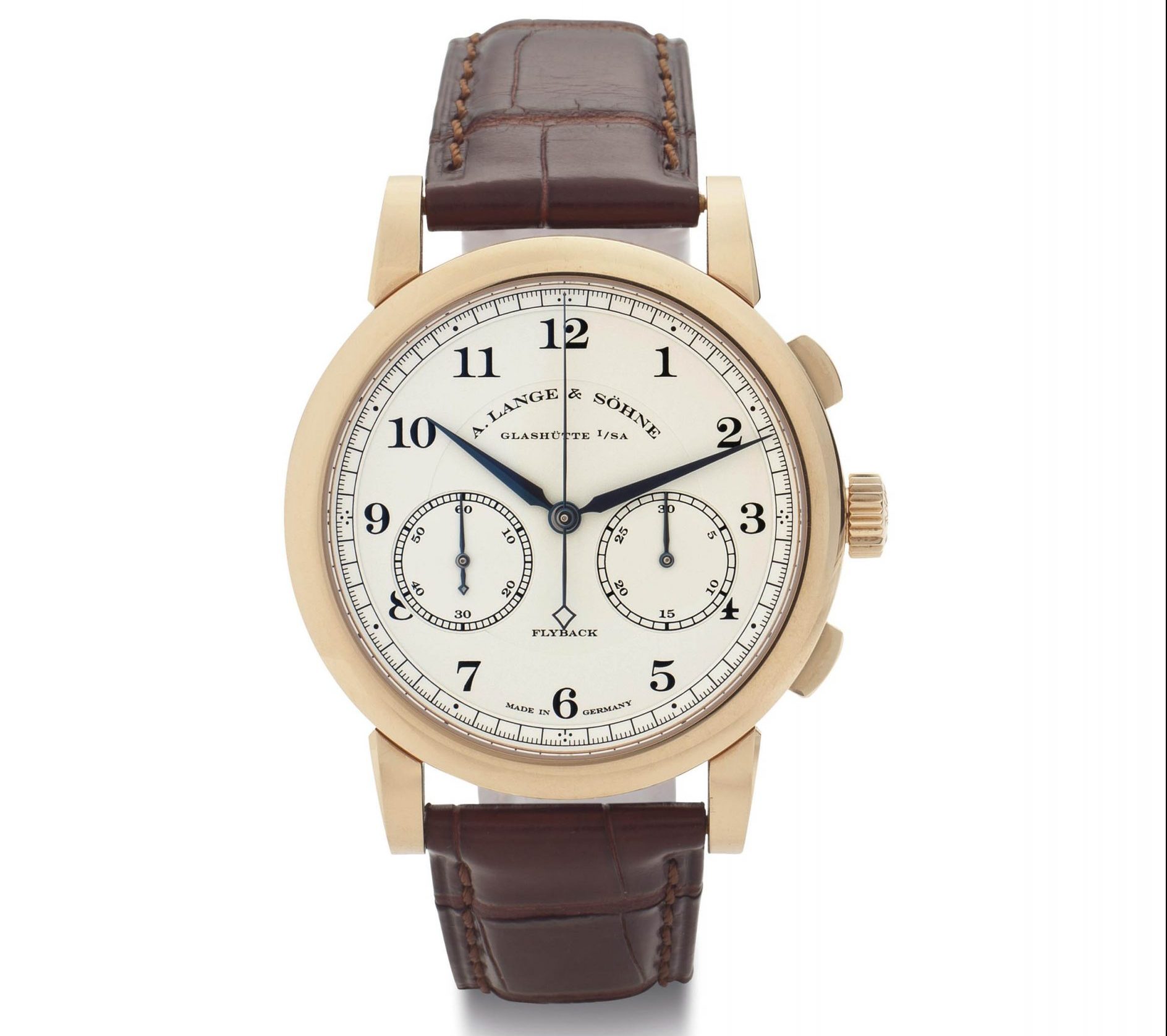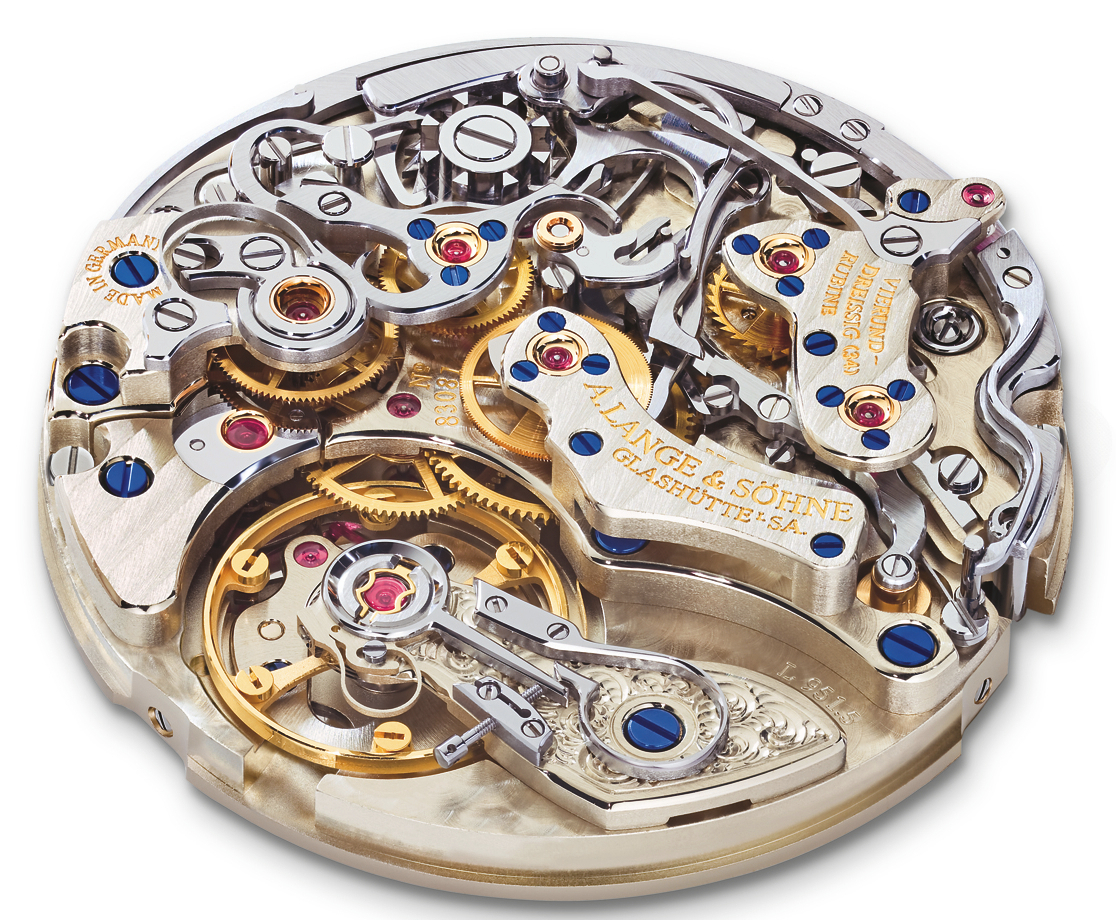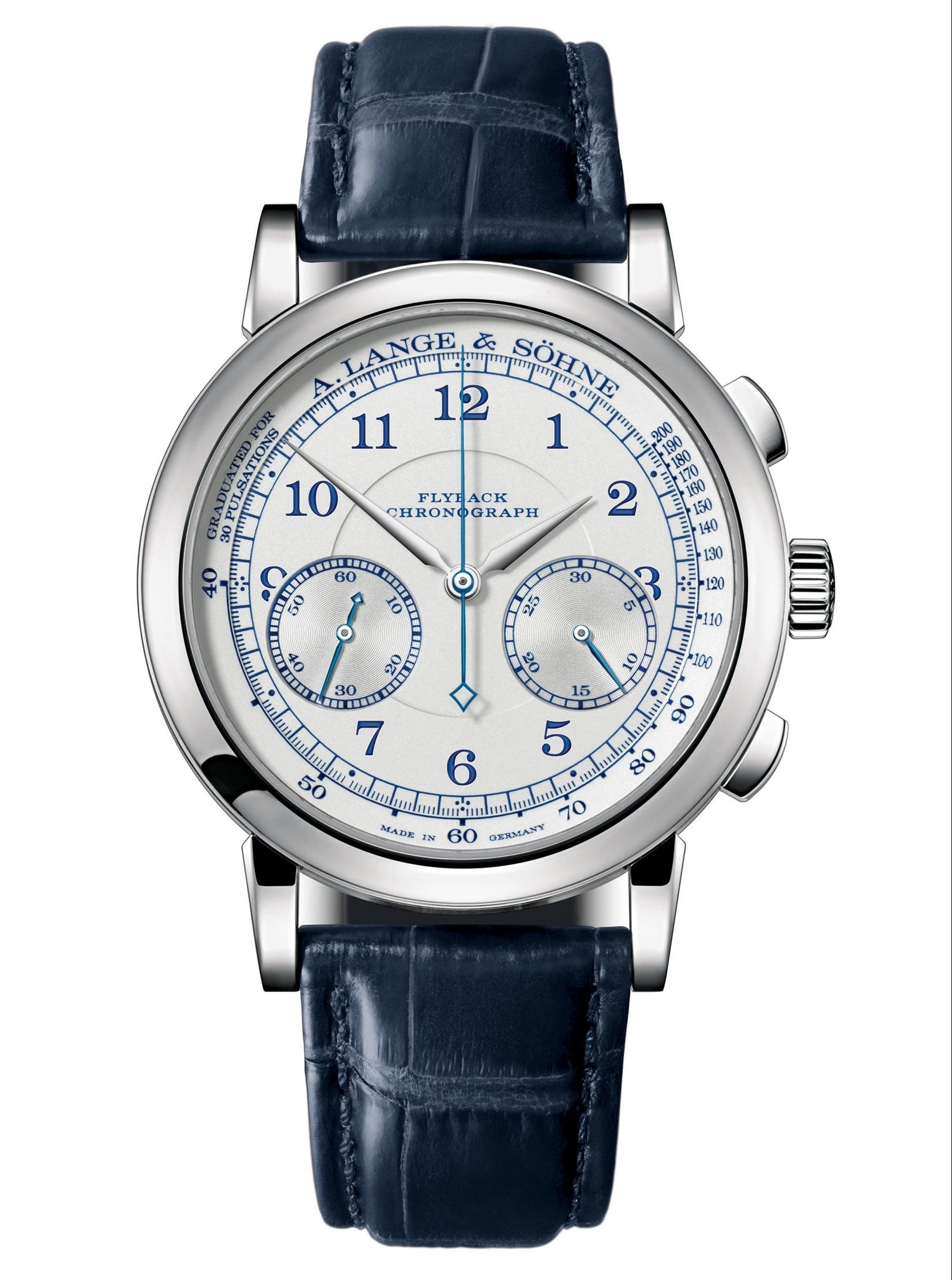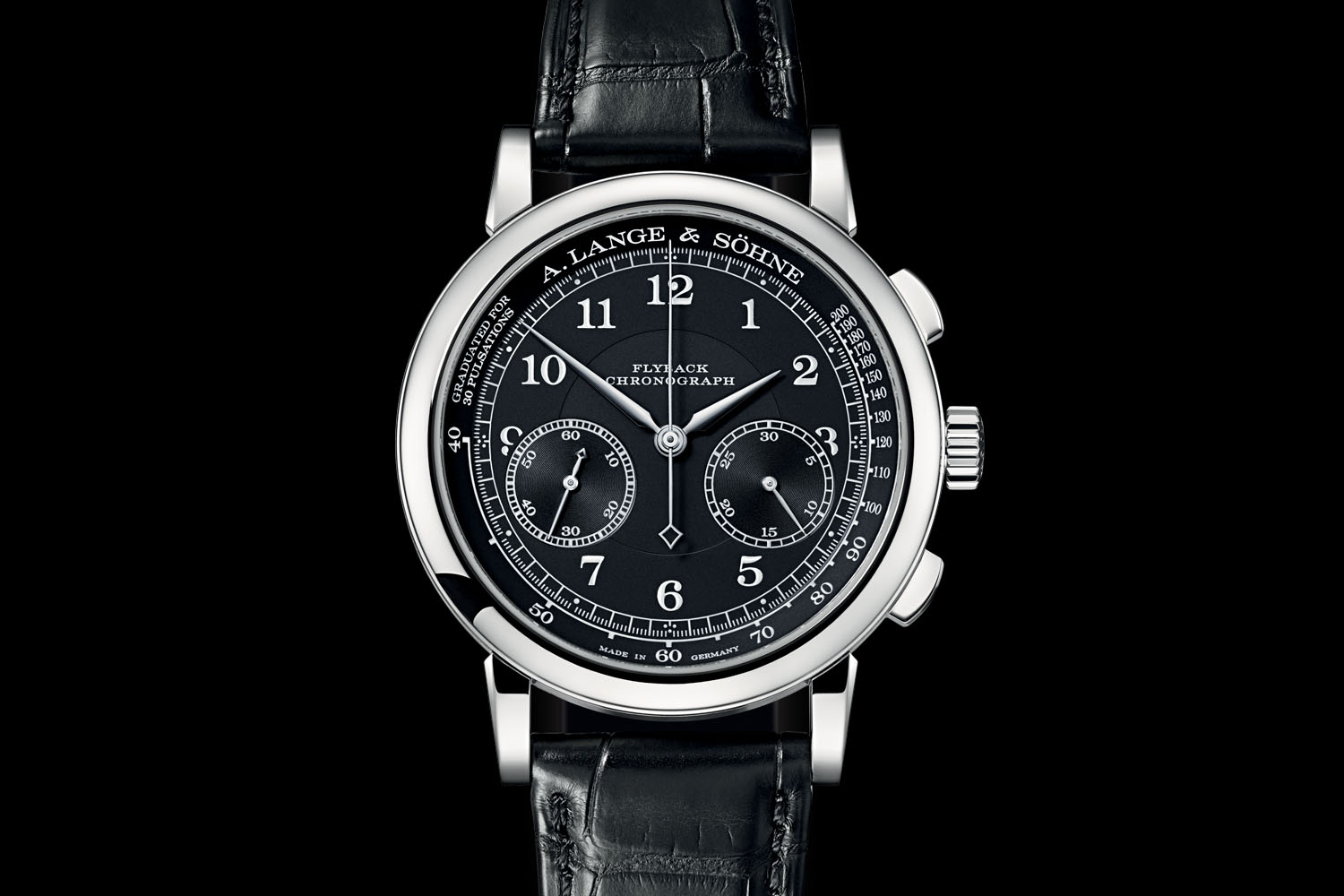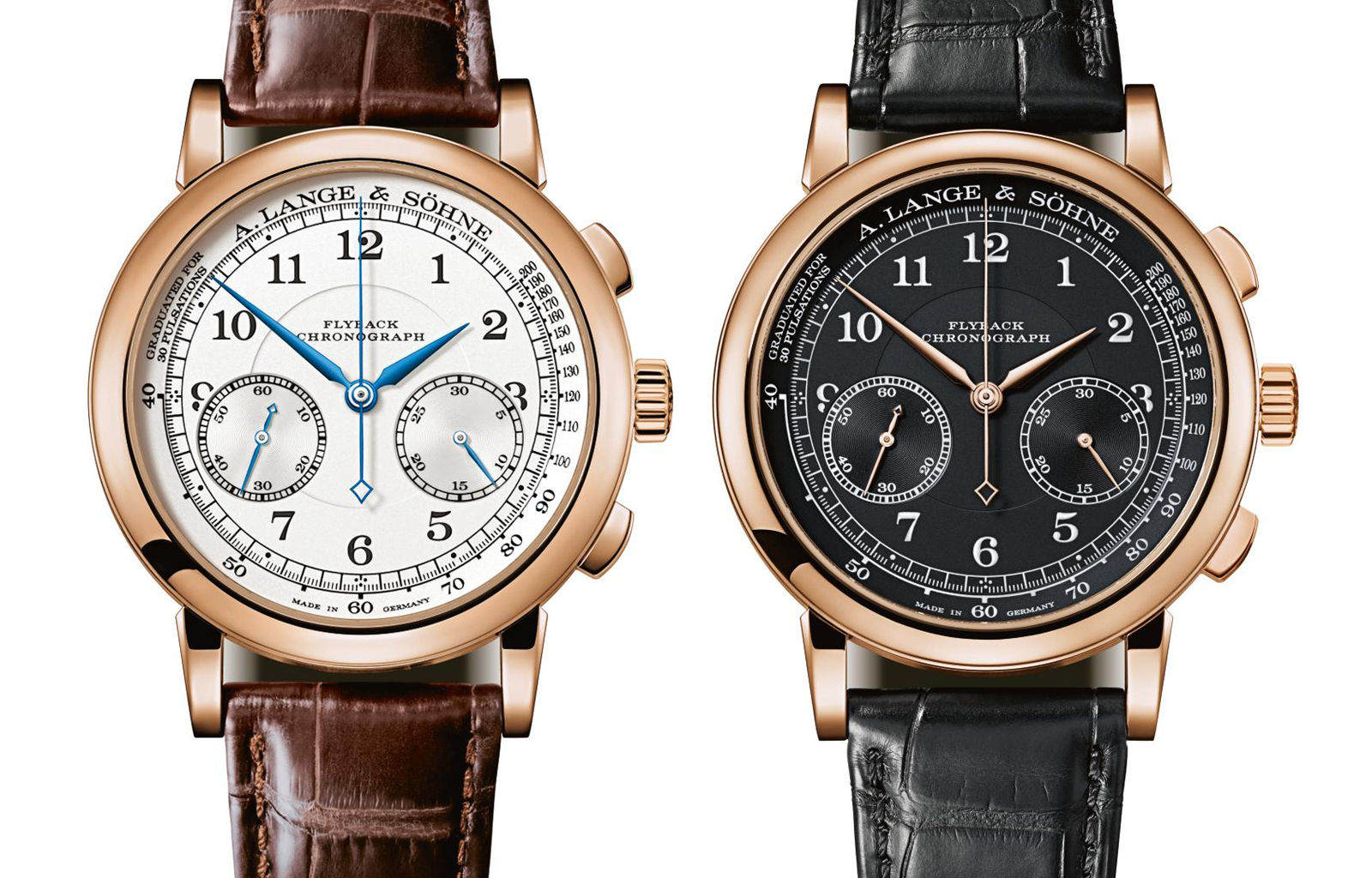This is the A Lange & Sohne 1815 Chronograph. And it is a damn good-looking watch. Some might say the best-looking chronograph watch ever. A perfect blend of balance, elegance and class, with a touch of sportiness for good measure. It’s not without its flaws, of course, but it has the sort of universal beauty that anyone can appreciate. It’s sized to fit about any wrist and lends itself well to dressing up or down. And to be honest, it’s been on my wish list since the boutique edition came out in 2015. But the story of the 1815 Chronograph begins well before that.
A (Very) Brief History Of The 1815 Chronograph
Most people are only familiar with the latest version of the 1815 Chronograph. The one that’s currently in the catalogue. And so, they assume this was the first and only version of the reference. But in reality, there were two previous generations of the 1815 Chronograph.
The first dates back to 2004, when Lange debuted the model at the SIHH. It was the first pure chronograph from the brand and caused quite a stir at the time. Many saw it as a pared back version of Lange’s incredible Datograph. That watch – and its breathtaking in-house flyback chronograph movement – put Lange on the map. And the watch world on notice. But with its platinum only case and high price tag, it remained inaccessible to most. And so, Lange set to work on the 1815 Chronograph.
- The business end of a 1st Gen Datograph – Image credit: Mike H, WatchProSite
The watch uses the same base calibre as the Datograph. Which depending on who you ask is incredible or a travesty. One of Lange’s founding principles was “one movement – one watch“. Meaning the brand would create a new calibre for each new model it produced. And so, you could argue that using the same base calibre in two different models was a contravention of this.
That said, the Calibre L951.1 was the benchmark for in-house chronograph movements at the time. If collectors couldn’t have that, they wanted the next best thing. One of the many reasons that destined the 1815 Chronograph for success. (Although it wasn’t immediate as we will see). And let’s not forget the investment that would have gone into developing the movement. It was no doubt sizeable and Lange needed to see a return.
The 1st Generation 1815 Chronograph
This 1st generation model established the unique design aesthetic of the 1815 Chronograph. Three-part case, with alternate brushed and polished finishings. Curved lugs. And a slimmer profile than its older brother the Datograph, at 10.8mm high. Although the case diameters are identical at 39mm. The key difference being the 1815 Chronograph came in gold only. Not platinum.
The dial features a four-layer construction, stepping down from the outside in. You can think of it as series of stacked rings, or discs with cut-outs. The outermost ring features a pulsometer scale. An outdated function found on watches designed for doctors in the 1920s and 30s. These days it’s more of a novelty than anything else. Although you can still use it in conjunction with the chronograph to take someone’s pulse. The scale slopes downwards, following the downward curve of the polished fixed bezel. This has the effect of drawing the eye towards the centre of the dial.
- The 1st Gen A Lange & Sohne 1815 Chronograph Ref 401.026 – Image credit: Phillips.
The rest of the dial follows the design codes of the 1815 collection. The chemin de fer minute track, featuring three-dots on each 15 minutes marker. Likewise, “m” shaped hash marks divide the seconds track into 5 equal intervals. The next step down is the central disc, with the words “flyback chronograph”. Followed by the recessed sub-dials. As with the 1815 Up/Down, the sub-dials sit below the centre-line of the dial. This is a carry-over from the Datograph, which irks some people as it interrupts the symmetry of the watch. Others say it gives the 1815 collection a distinct character.
Inside the first generation 1815 Chronograph is the caliber L951.0. Which is a simplified version of the Calibre L951.1 found in the Datograph. Although, the simplification concerns the decoration of the movement more than anything else. The only real technical difference is the absence of the big date mechanism. As a pure chronograph, the 1815 Chronograph does not offer this functionality. It does still offer a flyback chronograph and jumping-minute recorder though. And it oscillates at the same 18,000 bph, delivering 36 hours of power reserve.
- The Caliber l951.0
Although not as elaborate as its forebear, the decoration of the Calibre L951.0 is still top shelf. The movement comprises 320 components, 34 jewels and 4 gold chatons. And each has received special attention from Lange’s team of experts. Everywhere you look it’s mirror polish this, chamfer that. And the architecture of the movement is such that you could gaze into its depths for hours.
Despite its impressive pedigree, the 1st Gen 1815 Chronograph had a short shelf life. Four years in fact. Which is the blink of an eye in the watch world. The unspoken understanding is that it was not a strong seller for the brand. The design was too busy, too “radical”. Something which Lange sought to address with the 2nd generation. Of course, today, 1st Gen models – 401.026 and 401.031 – are sought after by collectors for exactly those reasons.
The 2nd Generation 1815 Chronograph
Two years after production ceased on the 1st Gen 1815 Chronograph, the 2nd Gen made its debut. This was an interesting time for the brand to say the least. A year earlier, Richemont, parent company of A. Lange & Söhne, changed its group structure. As part of this, Lange would now fall under the remit of Jerome Lambert. Then CEO of Jaeger-LeCoultre, and today the CEO of the Richemont Group. Despite the changes, the company would still operate as an independent entity. At least according to Richemont. But it seems this did not sit well with incumbent Lange CEO, Fabian Kröne. Shortly after, he stepped down due to “strategic differences of opinion.”
Why am I telling you all this you ask? Because it helps explain what happened next with the 1815 Chronograph. Although Lange had its own interim CEO – Mr Jerzy Schaper – most agree it was Lambert making the decisions. And he introduced a more modern, less quirky design ethos. And nowhere is this more obvious than with the 2nd Gen 1815 Chronograph. The first thing Lambert did when he saw the original design was get a big fat eraser out.
- An example of a 2nd Gen A Lange & Sohne 1815 Chronograph Ref 402.032 – Image credit: Christie’s
This makes sense when you consider that a chief criticism of the 1st Gen model was that it was too busy. In other words, for a pure chronograph, it wasn’t that pure. The 2nd Gen model addressed this by stripping the dial right back to the basics. Ditching the space consuming pulsometer scale gave the dial more room to breathe. Opening things up and giving more of a sense of balance. Lange’s use of negative space is legendary, and this model is a prime reason why. It looks and feels much less cluttered. The larger (39.5mm) case diameter also helped.
All the classic attributes of the 1815 collection are still there of course. Arabic numerals. Chemin de fer minute track. Off-centre sub-dials. But the dial appears flatter. The concentric step down is not as noticeable. On the balance though, it seemed like this was a wise, if safe, move on the part of Lange. For hardcore collectors though, the 1815 Chronograph lost a part of its identity. There was no denying this was a beautiful watch. But there was little left to distinguish it from competitors.
There is a big caveat to all that though. And it’s found on the opposite side of the dial. Turn the 2nd Gen 1815 Chronograph over and you come face to face with the Calibre L951.5. A revised calibre that offered a lot of benefits over its predecessor. These include an increased power reserve – from 36 hours to 60 hours. And a free-sprung in-house balance wheel and in-house balance spring. All whilst maintaining the unofficial title of best-looking chronograph movement on the planet.
- The work of art that is the Calibre L951.5 – Image credit: WatchBase
The 2nd Gen of the 1815 Chronograph was also destined to have a short production run. Like its elder sibling, Lange pulled the plug after four years. This time though, the brand already had something waiting in the wings to replace it with.
The 3rd (Current) Generation 1815 Chronograph
In 2015, Lange unveiled a new, boutique only edition of the 1815 Chronograph. Presented in an 18k white gold case – still measuring 39.5mm – its dial is hewn from solid silver. The hands, in rhodiumed gold and blued steel, contrast well and all other inscriptions are in blue. Resulting is a watch that is not only legible but also eye-catching. In an ice-cold kind of way. A precursor to the 3rd Generation, it brought together the best elements of the first two. And like the little bear’s porridge, it was just right.
The first thing to note is the return of the pulsometer scale around the periphery of the dial. It’s an interesting alternative to the more commonplace tachymeter scale. And speaks to the model’s pedigree as a sporty(ish) dress watch, as opposed to something for the racetrack. It’s also a subtle acknowledgement that the brand shouldn’t have removed it in the first place. Despite not being that functional, it’s an intrinsic part of the model’s identity.
That said, Lange has done a much better job of balancing the proportions of the dial on the 3rd Generation. While the layout is close to identical to that of the 1st Generation, things no longer feel as cramped. A key change Lange made was to remove the “m” shaped hash marks from the seconds track. If you look at pictures of the 1st Gen 1815 Chronograph you can see that these were quite bulky. Squashing everything else in towards the centre of the dial. This extra breathing room makes a big difference.
Likewise, a thinner bezel and thinner fonts all help open things up. Providing ample room for the larger sub-dials from the 2nd Gen model. Without upsetting the proportions of the dial. Best of all though, the 1815 Chronograph got its distinctive character back. So, it should come as little surprise that it was an instant hit.
Two years later Lange followed the Boutique Edition with a regular production model. And it was – and still is – fire! An 18k white gold case paired with a black dial. A combination the brand had only offered on the Datograph previously. In the ensuing years it’s added two further references in pink gold. One with black dial and the other with silver. All four references are available in the collection today. And all four use the same Calibre L951.5 as the 2nd Gen model.
Pricing & Availability
The retail price of the 1815 Chronograph is US$60,000. It’s the same price for each of the four references. Including the Boutique Edition. It’s a nice gesture by Lange as some brands charge a premium for such models. Availability is a bit more of a challenge due to the popularity of the model. And Lange’s low annual production numbers. As the name suggests the Boutique Edition is only available from Lange boutiques. But even then, you will need an established relationship. Chances of walking in off the street and buying one are slim.
That said, you can find examples of the 1815 Chronograph on the secondary market. Although not in as abundant supply as say the Rolex Daytona. Like most complicated Lange’s, they tend to lose some value. Although this model is better than others. As such, you can expect to pay below retail for a good example of a non-boutique reference. For example, this white gold/black dial combo from WatchBox (affiliate link) comes in at under US$54,000. The Boutique Only edition meanwhile can attract a slight premium. With pricing sitting somewhere between $60,000 – $65,000.
Is The 1815 Chronograph Collectible?
In the traditional sense of the word, I would say yes, no question the 1815 Chronograph is collectible. The model represents a significant part of the modern brand’s legacy. All three generations have something unique to offer and can stand on their own. Although I would say the 1st Gen and the 3rd Gen are the more popular choices with collectors. The former for being the first and the quirkiest of the three. And the latter for being the best incarnation of the model.
There is a view though that something is only collectible if you can stick it in a safe and watch it go up in value. A la a steel Ref 5711 Nautilus. And in this regard the case for the 1815 Chronograph is less clear. The 1st Gen has niche appeal and is not seen as a ground-breaking model like the Datograph. The 2nd Gen while less polarising, is also less interesting and in some ways less authentic. Although still a fantastic choice for a pure chronograph with an impeccable movement. And the 3rd Gen is about perfect. A clear contender for the best-looking chronograph ever. But one that is still yet to catch fire with the wider market.
That’s not saying that it won’t. But for the time being it doesn’t attract the same sort of premium as its Patek counterpart. Which if you stop to think about it, might actually be a good thing. Pay less money for a model that many think is as good, if not better. It ain’t rocket science. At the end of the day though, it comes down to personal taste. Buy what you like and will enjoy owning. You might not make a lot of money on the 1815 Chronograph. But you won’t lose a lot either.
Technical Specifications: A. Lange & Sohne 1815 Chronograph
- Case: 39.5mm x 11.0mm height – 18k pink or white gold, polished and brushed – sapphire crystal on both sides – 30m water resistance.
- Dial: solid silver, argenté or black – polished fixed bezel – Arabic numerals – rhodiumed white or pink gold hands – blued steel hands (depending on the reference).
- Movement: Calibre L951.5 – manually wound, decorated and assembled by hand – precision-adjusted in five positions – plates and bridges made of untreated German silver – balance cock engraved by hand – 306 parts – 34 jewels (including 4 in screwed gold chatons) – lever escapement – Shock-resistant balance wheel with eccentric poising weights – balance spring manufactured in-house with a frequency of 18,000 semi-oscillations per hour, precision beat-adjustment system with lateral set screw and whiplash spring – power reserve of 60 hours.
- Bracelet: Leather strap with buckle.
- Price: USD 60,000.
This article by TheWatchLounge has been sponsored by our partner WatchBox.
